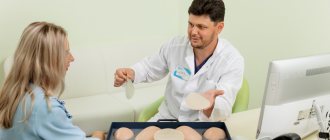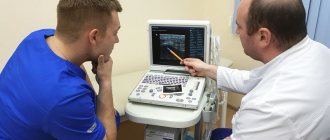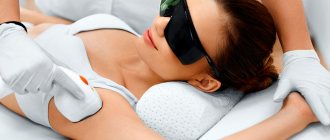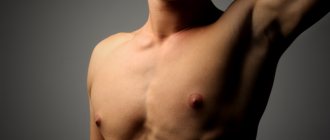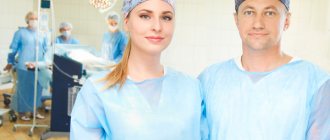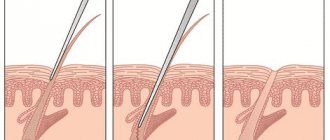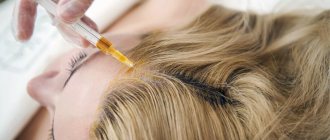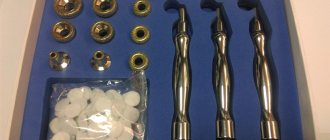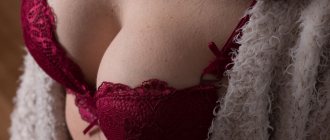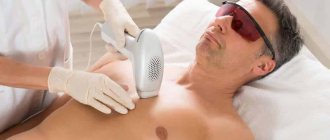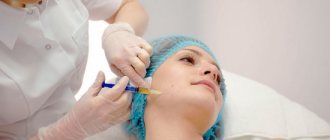Perhaps every person in his life has encountered such an unpleasant phenomenon as acne or pimples. For the majority, they appeared during adolescence, when endocrine restructuring and changes in the entire body occur. Rapid growth and hormonal fluctuations negatively affect the condition of the skin, causing problems such as acne or acne (the official medical name). But the worst thing is that some people do not get rid of this scourge even in adulthood. Unsightly rashes on the face cause cosmetic discomfort, can lead to psychological problems and significantly reduce the quality of life. To properly approach the solution to the problem, you need to understand what acne is and what types of these rashes occur on the skin.
Most often, the cause of such manifestations is excessive activity of the sebaceous glands, leading to inflammation of the hair follicles, which are located almost over the entire area of the body. Additional risk factors, in addition to adolescence, are poor diet (excessive consumption of fatty, salty, fried, fast food), alcohol and smoking, and constant stress. The face suffers the most from acne, which is especially offensive - after all, it is always in sight, it is the “calling card” of every person.
Types of acne
According to the type of external manifestations, all acne can be divided into groups. The most common occurrence on the face is papules and whiteheads, which may be accompanied by itching and irritation. For the body (back, chest, shoulders, buttocks), red pustules (pustules) are most characteristic. They are dangerous because, with severe inflammation, they can leave behind marks (so-called post-acne scars). Special forms of acne are acne of a genetic type (with a predisposition) and steroid acne, which occurs due to taking pharmacological (usually hormonal) drugs (including to improve performance in sports). Finally, there are deep rashes in the form of inflammatory nodes - conglobate acne, characterized by a severe form and rough scars after healing.
How is the plasma lifting procedure performed?
Venous blood is collected from the patient, then the tubes with blood are placed in a centrifuge. After centrifugation, the blood in the tube is divided into two fractions: platelet-rich plasma (clear fraction) and red blood cells (red fraction). Then the doctor injects the renewed plasma into the dermis. In each individual case, according to indications, various vitamins, amino acids, microelements, anti-inflammatory drugs and hyaluronic acid can be added to the plasma.
Treatment options
How to deal with such an abundance of different forms of acne? There are traditional treatment methods that include taking hormonal antibiotics or systemic retinoids. In many cases, they are indeed effective, but the risks of their use and side effects can overshadow all the positive results. In order not to act on the principle of “we treat one thing, we cripple another,” it makes sense to focus on more gentle methods in the treatment of acne and post-acne. One of them has proven itself to be the well-known method of plasma lifting, the origins of which can be traced back to autohemotherapy, known for more than 100 years.
Why did acne appear after plasma lifting?
After the first procedures, it is possible that the rashes may intensify as the skin reacts to the intervention, but their number will decrease over time. The first results can be seen in about a month if you approach treatment comprehensively.
Azelik® gel can be included in complex therapy for mild to moderate acne. It should be applied 2 times a day to previously cleansed skin.5
To reduce the risks of side effects and prolong the results, you need to follow the recommendations of a skin care specialist, postpone visiting the solarium, sauna, bathhouse for two weeks, swimming pool, gym for a week. On the day of the procedure, you cannot use decorative cosmetics and you need to drink more water.
Plasmolifting in the treatment of acne
The main area of application of plasma lifting is anti-aging cosmetology. This technique allows you to tighten and tighten the skin, smooth out small expression wrinkles, improve complexion and reduce dryness. But plasmolifting has such properties as accelerating the healing of various injuries, tissue regeneration, and improving metabolic processes. They formed the basis for the use of plasma lifting in the treatment of acne and post-acne. The essence of the method is to administer the patient’s own platelet-rich plasma through intradermal injections. Plasma is obtained from blood through subsequent processing (separation of the necessary components). Since exclusively the patient’s own plasma is used for the procedure, this eliminates the risk of infection with any viruses (occurs when transfusion of someone else’s blood) or the possibility of rejection by the body.
Plasmolifting accelerates cell division and intercellular metabolism. This leads to normalization of the sebaceous glands (the main problem with acne) and increases the elasticity of the skin. Acne goes away without leaving any traces in the form of scars or cicatrices. The effectiveness of the method in each specific case depends on the severity of the problem and the characteristics of its course. As a rule, 4-6 plasma lifting procedures are sufficient to get rid of acne. At the same time, you should be prepared for the fact that the body may initially react with increased formation of acne - this is normal. To enhance the effect and speed up getting rid of acne, it is recommended to combine plasma lifting with other methods, which are selected individually in consultation with a dermatologist-cosmetologist.
Efficiency and method of the procedure
The high efficiency of the plasma lifting technique is based on the natural properties of platelets - their ability to release various types of growth factors that demonstrate a pronounced stimulating and regenerative effect.
Growth factors are a kind of signaling molecules that stimulate the functional activity of skin cells and their adequate interaction.
For example:
- Some growth factors activate angiogenesis (sprouting of new vessels), thereby improving trophism (tissue nutrition) and tissue oxygenation (oxygen saturation);
- others accelerate the healing process of wounds and neutralize inflammation;
- thirdly, I stimulate the growth of fibroblasts, which helps speed up the restoration of damaged skin, etc.
Using the effectiveness of plasma lifting for the face, you can significantly change and improve the condition of your skin. Achieving the required result involves the use of a certain technique for administering plasma injections:
- papular injections – evenly over the entire face for general skin rejuvenation;
- local injections - into problem areas with wrinkles and creases in the skin;
- linear injections – to eliminate age-related wrinkles around the eyes and (or) lips;
- fan injections – to eliminate serious signs of skin aging, heterogeneity of its structure and relief, etc.
The choice of technique for giving injections is individual for each client of our clinic and is aimed at achieving the best possible result of the procedures.
Indications
- Signs of photoaging – pigment spots, defects of small vessels, decreased elasticity, dryness, flaking
- Signs of aging – wrinkles, creases, gravitational ptosis
- Uneven skin texture and color
- Decreased skin immunity, inflammation, rashes, non-healing wounds
- Congestion, swelling, pastiness (swelling)
- Unhealthy complexion – dull, sallow, yellowish, greenish
- Negative consequences of stress, inadequate care, diseases and skin lesions, etc.
Contraindications to the procedure
- Bleeding disorder
- Systemic administration of anticoagulants
- Diabetes
- Chronic diseases of the liver, kidneys
- Autoimmune diseases
- Damage to the skin at the injection site
- Chronic infections prone to recurrence
- Pregnancy and lactation period
Preparation for the procedure
Facial plasma lifting is not performed on the day of treatment. To obtain “good” blood and extract the most effective plasma from it, you need to prepare for the procedure 3 days before the procedure. You should avoid drinking alcohol, nicotine, too fatty, salty, hot, spicy foods. The skin of the face must be protected from exposure to ultraviolet radiation, mechanical damage, and “aggressive” care products based on alcohol and acids.
A doctor at our clinic will help you prepare correctly for plasma lifting. We recommend that you make an appointment with him in advance in order to, during a confidential conversation, identify possible contraindications to the procedure, determine the complexity of the aesthetic problem, calculate the cost of the plasma lifting course and ask questions that interest you.
Recovery after plasma lifting
Plasmolifting rejuvenation is often called a “weekend” procedure, which once again emphasizes the accessibility and minimally invasive nature of the method. It does not involve long-term rehabilitation - skin restoration takes only 1 - 2 days.
The minor redness, bruising or slight soreness that occurs is an absolutely normal reaction of the skin to micropunctures with a syringe needle. They do not require specific care and go away on their own.
It is very important during this period and throughout the course to protect the skin from any kind of aggressive influences - steaming, rubbing, UV radiation, alcohol-based cosmetics, etc. The doctor at our clinic will definitely tell you how to properly care for your facial skin after plasma lifting. Make an appointment and come!
Plasmolifting helps eliminate post-acne
In severe cases or with improper treatment (especially when squeezing pimples, which is strictly forbidden to do), complications may arise. If a person has already experienced the negative course of acne, which left behind scars and unsightly marks, this can also be dealt with. The integrated use of plasma lifting and deep peeling allows you to achieve good results. In this case, it is important to start the process of replacing damaged skin with new cells, for which peeling is first used. And plasmolifting helps speed up the process of cellular metabolism, regeneration and normalize the functioning of skin glands. As a result, scars and age spots are significantly reduced and new, young skin is formed.
Plasmolifting is a real help for age-related as well as complicated forms of acne (acne) and eliminating their consequences. Moreover, along with its effectiveness, the method is characterized by safety and the absence of side effects (in comparison with hormonal and antibacterial drugs).
Sign up for a free appointment:
On what day after surgery can plasma lifting be done?
Usually, plasma lifting can begin as soon as the stitches are removed. On the face, sutures are removed after 7-8 days. After 2 weeks, the plasma therapy procedure is repeated. In total, you need to do at least 3 procedures.
Can we say that plasma lifting is a method of treating scars?
It is difficult to cure with the help of plasma lifting. But you can improve the condition of scars. Our main task is to speed up the process of rumen maturation. While it is immature, the process is accompanied by itching and pain. And plasma lifting reduces negative manifestations. If the patient has extensive scars (more than 30% of the area), then it is of course impossible to chop the entire body. Then we try to inject plasma only into aesthetically significant places (face, neck) or where contracture forms (bend of elbows, knees).
And if a patient comes with a very old scar, does it make sense to do plasma lifting?
Either way, it won't hurt. You can even simply improve the aesthetic appearance of your face. The skin becomes smoother and more elastic.
And if we are talking about acne scars, is plasma lifting applicable?
Yes, in this case, plasma lifting is one of the options for complex treatment. As a rule, laser resurfacing is effective after acne.
How much does plasma therapy for scars cost?
Patients with scar deformities do not belong to the wealthy category, so our price is average: 5-6 thousand rubles per procedure
.
Thank you, Natalya Alekseevna. Your explanations are very valuable and, we hope, will be useful to readers, because the topic of treating scars with minimally invasive methods is covered very little in available resources
X.
Platelet Rich Plasma Therapy with Ycellbio PRP kit
The effect of plasma therapy depends not only on the characteristics of the patient’s blood and the characteristics of his body, but also on the method of processing the resulting autoplasma. The material must be free of foreign matter and contain the maximum number of platelets. Only in this case is it possible to isolate growth factors that trigger regeneration mechanisms.
“SANMEDEXPERT” uses the Ycellbio PRP kit to collect and purify the patient’s blood. This unique Korean development is a special container that facilitates the collection and separation of platelet-rich plasma. What are the advantages of Ycellbio PRP kit? The set allows:
- It is easy and quick to carry out the blood collection procedure.
- Effectively separate red blood cells and excess plasma. This eliminates the risk of damage to the biomaterial. Just 15 ml of blood is enough.
- Increase the concentration of platelets in the final product by 7-9 times compared to the original biomaterial. For a good result of PRP therapy, a fourfold increase is enough.
The internal control system allows you to obtain the most effective material for prp therapy from blood of various characteristics.

